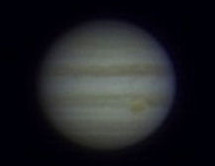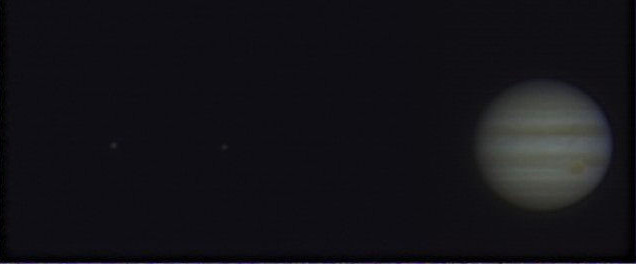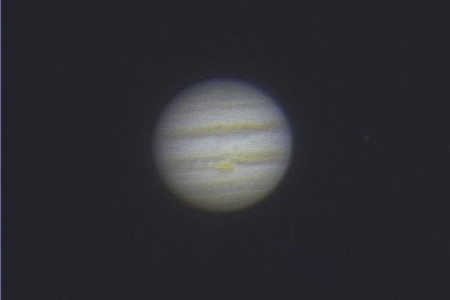Here is Jupiter captured with a de-forked Celestron C90 Astro, taken using the stock 2.5x barlow extender and an ASI-224MC camera.

I bought a Celstron Evolution 8 for visual observation, but I couldn’t resist trying it out for imaging as Jupiter came to opposition in September 2022.
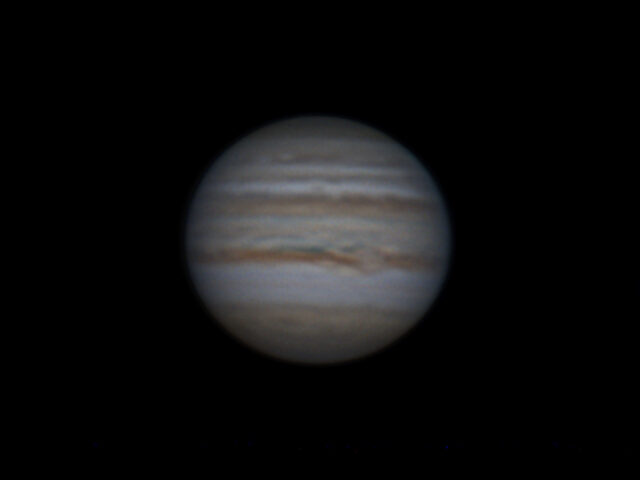


The other blue planet, Uranus, proved a tough target when i pointed by Skymax 127 towards it in February 2021.


These are some images I’ve taken with my 127 and C90, back to back on the same night with the same kit (HEQ5 Pro, 2x barlow, ZWO ADC and ASI-120MC). Each time I’ve taken the best 25% of 10000 frames using AutoStakkert, and then performed wavelet sharpening in Registax.

Previously I made the following comparison between 127 and 102.

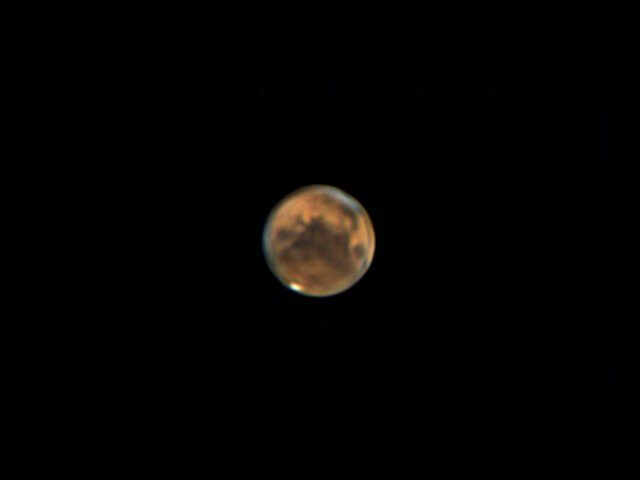
Jupiter in August 2019 with a Skymax 127 and a Celestron C90.
Venus, the waning Moon and Jupiter low in the south-eastern sky at 6am on 31st January 2019. About four degrees separates each planet from the moon. Handheld shot using a 700D and a 50mm lens.
The closest line of sight meeting of the red and blue planet for 200 years. 75% cloud and showers at 17:30UT.
Mars with a Celestron C90. Syrtis Major coming into view on the right, with bright Hellas below.
Jupiter on 28th June 18, getting lower in the southern sky after sunset. Good seeing for once allowed use of a 3x barlow. Happy with the result!
Jupiter and the GRS, May 19th 2017. Kenko 3″ refractor.
The planet Mercury taken 45 minutes after sunset on 1st April 17 with a Circle-K 3″ refractor I bought on ebay. Happy with the scope. Classic ‘frac.
Venus after sunset on 15th March 2017. Taken with a Celestron C90 and a x2 Barlow.
Uranus forming a triangle with 88 and Zeta Piscium. WO GT81s with 8s exposure.
Zoomed-in view of Neptune showing the vivid blue colour. Beautiful!
Mars (upper left) and Neptune (lower right, blue dot) on 2nd January 2017, using a Canon DSLR and a WO GT81. 10s exposure.
Zoom on Mars and Neptune from the same frame to count pixels!
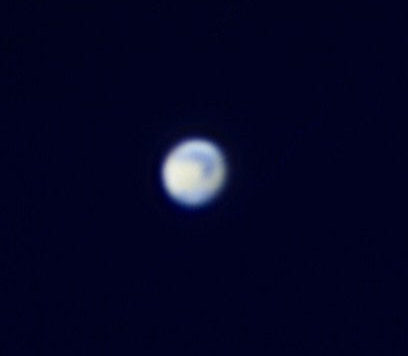 Mars on 18th June 2016 at 23:30pm, taken through a SkyMax 150 using a 2x Barlow. The seeing was poor and the planet was low down in the southern sky. 200 frames was all I could get between the clouds.
Mars on 18th June 2016 at 23:30pm, taken through a SkyMax 150 using a 2x Barlow. The seeing was poor and the planet was low down in the southern sky. 200 frames was all I could get between the clouds.

 Transit of the moon Callisto across the northern polar region of Jupiter, taken on May23rd 2016 using an SPC900NC webcam, a Skywatcher Skymax 150 Pro telescope and a 3x barlow. To focus I used a Bahtinov mask on Arcturus and locked the focuser.
Transit of the moon Callisto across the northern polar region of Jupiter, taken on May23rd 2016 using an SPC900NC webcam, a Skywatcher Skymax 150 Pro telescope and a 3x barlow. To focus I used a Bahtinov mask on Arcturus and locked the focuser.








